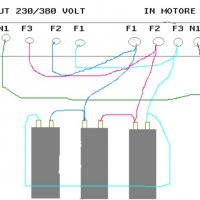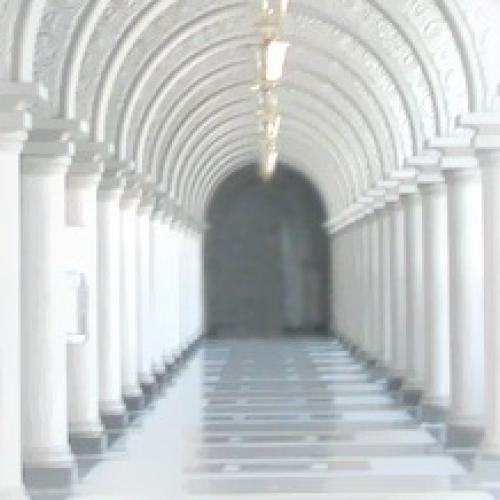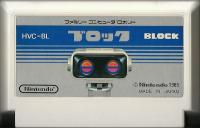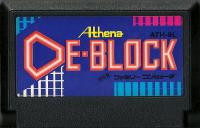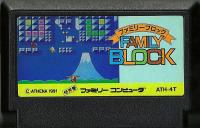Dreamcast Block Diagram

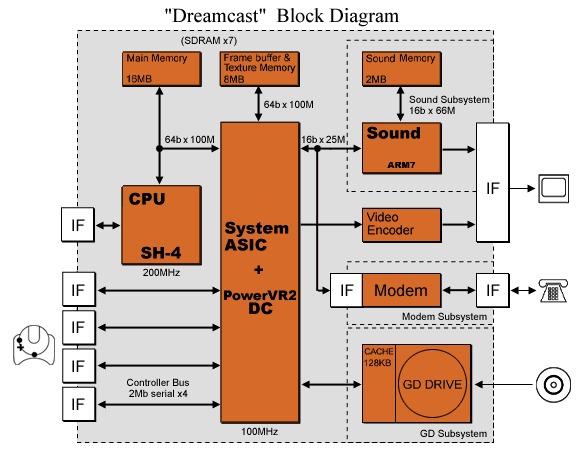
As you can see the PowerVR2DC graphics chip is the heart of the system, in that it contains specific circuitry for connecting all the devices together. This extra circuitry is called the System ASIC (Application Specific Integrated Circuit).
Internal Bandwidth
The diagram above shows the bandwidth between the processors, and their individual dedicated memories. This follows the segmented memory architectural design. The SMA design allows each major component (CPU, Graphics, Sound) to do it's 'job' without any data contention interference from each other.

Note also that a game can have textures stored in main memory and those textures can be moved into graphics memory at 64-bits x 100 MHz = 800 MB/s, as indicated on the diagram. The Dreamcast has exceptionally high internal bandwidth, and is even more impressive when paired with the incredibly bandwidth efficient 'tile' based rendering of the PowerVR graphics chip!
External Bandwidth
Controller Ports: These ports have a rated bandwidth of 2 Mbits/s, or 250 KBytes/s. This is 1/6th the speed of a PC USB (Universal Serial Bus) port, which can transfer data at 12 Mbits/s. Even though it is quite a bit slower then USB, it still more then fast enough for any data transfer that has to take place between the controllers and the main unit. A 128 KB VMS memory unit can transfer it's entire memory contents to the Dreamcasts main memory in half a second.
The port coming off of the SH-4 is the rear serial port, that has the same performance characteristics as the controller ports, which is about 2 Mbits/s, or 250 KBytes/s. This port can be used for networking two DC's together, or attaching external devices like a keyboard, etc.
Modem Port: This port is attached to a bus that is rated at 16-bits x 25 MHz = 50 MB/s, and this same bus is also used to transfer sound data from the GD-ROM to the sound system. The speed of this port clearly shows that it cannot support any processor or memory expansion at all, which is contrary to what others have suggested. It seems quite clear by this diagram that the Dreamcast has no external ports that can support a processor or memory expanision, as the ports are not fast enough.









